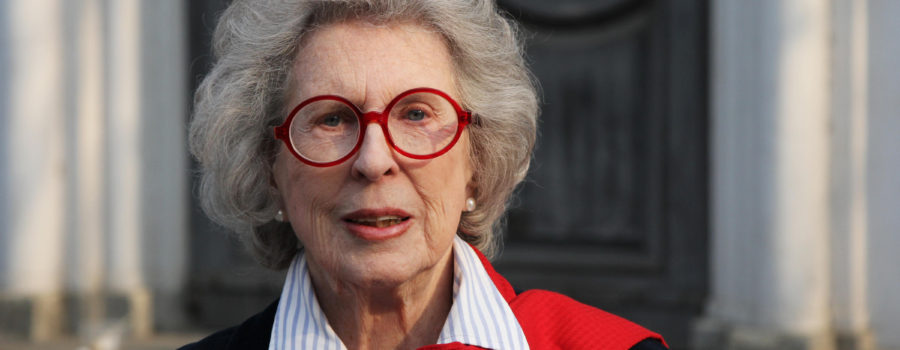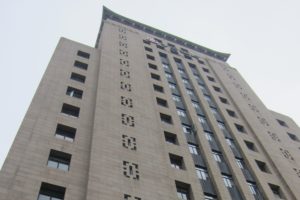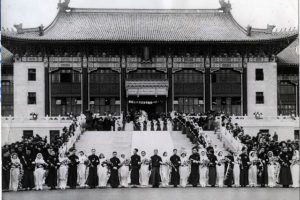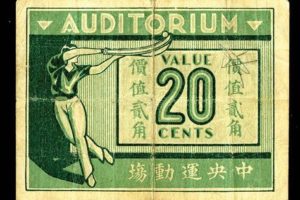Shanghai’s historic architecture and Art Deco heritage owes a great deal to Shanghainese photojournalist Deke Erh and American author Tess Johnston. The pair first told the history of Shanghai through her architecture in 1993, with their classic A Last Look: Western Architecture in Old Shanghai. Although they didn’t focus on Art Deco in that particular book (that would come later, with Shanghai Art Deco in 2006), their work was the first to raise awareness of the city’s built heritage, and the first to visually record and highlight its Art Deco architecture.

Tess Johnston & Deke Erh’s pioneering book on Western architecture in Shanghai was first printed in 1999 with a new edition in 2004.
In the intervening two decades, they have published, together and separately, literally a reference library on old China. These include a series on Western architecture in China’s treaty ports, Frenchtown Shanghai, on the former French Concession, and their classic tome on Art Deco (one of the “great loves of Deke’s life,” says Tess). How did it all start?
For Tess, it began when she arrived in Shanghai in 1981 with the U.S. Foreign Service. “I had never seen anything like [Shanghai],” she says. The Charlottesville, Virginia native — who retains a Southern drawl, in English and Chinese — had lived all over the world with the Foreign Service, but “I had never been to a foreign country that looked so utterly and completely Western. It was perfectly preserved, a cross between Warsaw in 1938 and Calcutta, a totally Western city with an Asian population.”

Tess Johnston arrived in Shanghai in 1981. Here she is on her last walk before she repatriated, in 2016 – the backdrop is that ‘utterly and completely Western city’ she found in 1981.
Deke is a Shanghai native, but it was a return to his city that opened his eyes. He first picked up a camera as a teenager during the Cultural Revolution (1966-76) because “we had plenty of time then, and I needed something to do.” Saddled with what was then called a ‘bad family background’ — his grandfather, Y.H. Erh, was recruited into the US Navy, awarded a medal for acts of heroism during World War II, and became an American citizen; his father worked for Texaco — Deke says that he just wanted to get away from the city, where all his associations were negative. So he traveled the countryside, but upon returning, he realized that Shanghai had a treasure trove of historic architecture. “Nobody was interested back then,” he says, with the barest hint of irony. “Not even the professors at Tongji University (noted for its preservationist architectural faculty).”

When photojournalist Deke Erh began photographing historic Shanghai architecture, no one was interested.
That is perhaps because in 1981, the city’s pre-1949 Western architecture was considered little more than an embarrassing reminder of forced foreign domination. As a result, collective amnesia had descended when it came to the history of these buildings. In addition, many of the buildings were inaccessible. It all added to the challenge, but the pair doggedly soldiered on, photographing and documenting what they could. Tess augmented her knowledge with trips to the markets and bookstores, where books, directories, even building floor plans were available.
In 1992, the economic reforms began, and Deke and Tess quickly realized that this museum of architecture could not last. That first book was the beginning of a crusade “to preserve these Western monuments for future generations through our photographs, our research, and the collective memories of the buildings’ former architects, builders and tenants,” as Tess says.
It was also a gift: Deke explains that he wanted to re-shoot the second edition of A Last Look. “But what I found in trying to recreate the photographs was that so many of the buildings had disappeared forever, or had been changed beyond recognition.” Their book serves as the most complete visual record of Shanghai’s historic architecture.
One of those books was Shanghai Art Deco, which documents the city’s Art Deco heritage: the architecture, architects, furniture, graphics, and objects – many of which the authors have collected over the years.
Says Deke, “development does not mean that we must destroy the old city and rebuild a new one on its former site.” While both lament the “thinning of old buildings,” and unthinking renovations that strip interiors of their original details, the fact that so much of Shanghai’s built heritage remains is a testament to their early efforts: their books are at once a record of history and a compelling argument as to why it needs to be preserved.
To purchase the final edition of Tess Johnston’s architectural walking tour guide series of old Shanghai, “The Where’s Where of the Who’s Who of Old Shanghai”, click here.
Shanghai Art Deco and A Last Look are out of print, but some copies can be found online. Deke’s bookshop, Old China Hand Style, 374 Shaanxi Nan Lu/Fuxing Zhong Lu has some copies of their other books.






Most Commented Posts